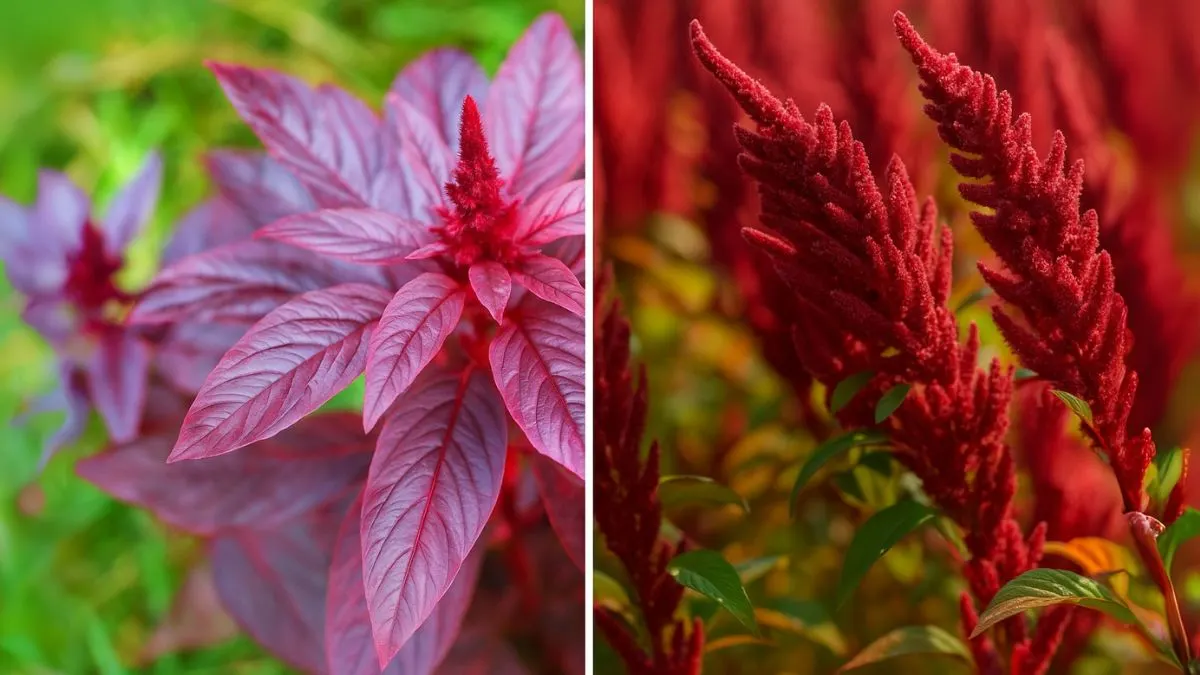Few plants can match the resilience and global popularity of Amaranth plants. Found in Asia, Africa, and the Americas, amaranth is celebrated for its edible leaves, protein-rich seeds, and ornamental beauty. Because it’s easy to grow and requires little care, gardeners often call it the “cosmopolitan plant.”
When I first grew amaranth in my backyard, I was surprised at how forgiving it was. Even when other vegetables struggled with poor soil and inconsistent watering, my amaranth thrived. That’s its true beauty—it offers nutrition and beauty without demanding much in return.
Why Choose Amaranth?

- Nutritional powerhouse – The leaves are rich in vitamins A, C, and K, while the seeds provide complete protein.
- Resilient grower – Amaranth grows properly on average and enough even in poor soils, which makes it perfect for beginner gardeners.
- Dual purpose – Can be grown for leafy greens or harvested for seeds.
- Ornamental appeal – Many varieties produce striking red or golden flower plumes.
Climate and Soil Requirements
If you’re wondering whether it will grow in your area, here’s the good news—it likely will.
- Amaranth prefer a warm climate, full sun, and a well-drained soil. It thrives in summer heat without complaint.
- Unlike many plants, Amaranth grows properly on average and enough even in poor soils, making it ideal for gardens with less-than-perfect soil.
- The plant belongs to a group known as C4 plants, which means it uses a highly efficient photosynthetic pathway. This allows it to grow quickly in hot, dry environments, where other crops may fail.
Also Read: These Bonsai Varieties Will Steal Your Heart
Planting Amaranth
1. From Seeds
- Sow seeds directly into the garden once the soil warms up.
- Plant about ¼ inch deep and keep the soil moist until germination.
- Thin seedlings to 10–12 inches apart for leafy greens, or more if you want larger plants for seed harvest.
2. From Transplants
In cooler climates like Canada, start seeds indoors 4–6 weeks before the last frost, then transplant them outdoors when the soil is warm.
Sunlight Needs
Amaranth loves the sun. To get the healthiest plants:
- Provide full sun exposure.
- In northern climates, a south-facing garden bed or balcony ensures enough warmth.
- If grown indoors, place pots in the brightest window or use grow lights.
Watering and Maintenance
- While drought-tolerant, amaranth benefits from regular watering during dry spells.
- Overwatering should be avoided since well-drained soil is key to preventing root rot.
- Mulch around plants to conserve moisture and control weeds.
Also Read: Crocuses Varieties That Will Bloom Before Winter’s Over
Fertilization
Because it thrives in poor soil, it rarely needs fertilizer. However:
- Adding compost at planting time improves yield.
- For seed production, a balanced fertilizer applied mid-season can help.
Harvesting Amaranth
- Leaves: Begin harvesting when plants are 6–8 inches tall. Pick young leaves for tender texture and mild flavor.
- Seeds: Flower heads mature after 3–4 months. Shake or rub them gently to release seeds.
A single plant can yield thousands of seeds, enough for home cooking or replanting next year.
Culinary Uses
- Leaves: Cooked like spinach, perfect for soups, stir-fries, or curries.
- Seeds: Toasted or ground into flour for breads, porridges, and desserts.
- Ornamental: Varieties like Love-Lies-Bleeding bring bold color to landscapes.
Personal Experience
When I grew amaranth alongside kale and spinach, it was the star performer. While the others struggled with pest attacks and soil deficiencies, amaranth stood tall. Its resilience made me realize why people worldwide call it the “cosmopolitan plant.” It felt almost effortless—just sow, water a little, and harvest.
Also Read: Struggling with Hanging Plants? This Is What You’re Doing Wrong
Requirement |
Best Practice |
Sunlight |
Amaranth prefer a warm climate, full sun, and a well-drained soil |
Soil |
Amaranth grows properly on average and enough even in poor soils |
Plant Type |
Amaranth is a C4 plant – thrives in hot, dry conditions |
Propagation |
Direct seeding is easiest; transplant in cooler climates |
Harvest |
Leaves at 6–8 inches; seeds after 3–4 months |
Global Appeal of Amaranth
- In India, amaranth (rajgira) is used in festive sweets.
- In Mexico, it’s a staple for traditional candies.
- In Africa, it’s a crucial leafy green for families during dry seasons.
- In USA and Canada, it’s gaining popularity as a superfood in health-conscious diets.
This truly makes amaranth a cosmopolitan crop—embraced everywhere for different reasons.
Growing Amaranth plants is one of the easiest ways to add resilience, nutrition, and beauty to your garden. Whether you want leafy greens for your dinner plate, protein-rich seeds, or vibrant blooms, amaranth delivers. Start small, experiment, and soon you’ll realize why it’s rightly called the cosmopolitan plant of the gardening world






